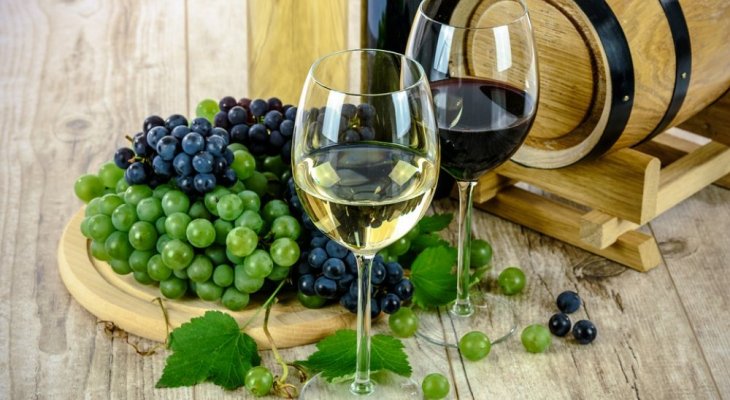Does More Sugar Mean More Alcohol? (Understand Sugar Alcohols)

During my research of homebrewing and brewing in general, I was wondering about what sugar actually does for the alcohol percentage.
So I went and did some research and found out exactly what sugar does to alcohol levels of beers, wines, and spirits.
Does More Sugar Mean More Alcohol? Simply adding sugar into a finished wine, beer or other alcoholic beverages won’t do anything. Where sugar affects the alcohol percentage is in the fermenting or distilling process. The yeast used absorbs sugar and creates alcohol. Higher levels of sugar added can give higher alcohol percentages.
So overall adding sugar can increase the alcohol percentage, but it can also increase other aspects of the alcohol.
Read on as I explain how sugar can benefit different aspects of alcohol.
Sugar For Homebrewing
- Corn Sugar
- 4 lb bag
- Used to boost alcohol content, or to lighten beers
Last update on 2025-12-17 / Affiliate links / Images from Amazon Product Advertising API
If you want to know about the use of sugar in beer brewing from another angle, take a look at this post here.
So, What Does Sugar do to Alcohol?
Generally speaking, the answer to a higher alcohol percentage lies in the sugar. The yeast used in the brewing or distilling processes consumes the sugar you add and converts it to alcohol.
However, when homebrewing, it is not recommended to stray from the recipe you are using. Yeast varieties are made and used for different purposes, so if making higher alcohol percentage batches, make sure you acquire a yeast suitable for this.
Adding too much extra sugar can ruin the overall quality and taste of your batch.
Experimenting with sugar levels can give a unique taste to your alcohol.
IMPORTANT NOTE: in the US it is not allowed to distill your own spirits, even for just personal use.
It is, however, legal to own any licensed distiller, no matter the size. So if you just want a distiller for decorative reasons, then go ahead, but know that distilling any type of spirit alcohol at home is illegal in the US.
Some other countries do allow you to brew your own spirits, but most don’t allow you to brew your own pure alcohol. If you want to distill your own spirits in a country that allows it, you have to buy alcohol in a store and then use it for home distilling.
When making wine or beer and especially wine, experimenting with sugar levels during the fermenting process can give interesting results.
Don’t expect to make a wine as strong as vodka, gin or other spirits.
Most yeasts used when making wine won’t allow you to bypass the 20% alcohol percentage barrier. The reason for this is the yeast simply can’t handle too high alcohol levels or it will die out.
Make sure you know how the yeast you use reacts to the process you are trying to perform.
When making high alcohol Wine, it is important to focus on not ruining the taste of the wine. When you want to increase alcohol content it is very crucial that you add more berries or fruits than usual.
If you don’t add extra ingredients to amplify the taste, your wine will taste rather bland. Make sure when making high alcohol wine, that you add the necessary extra ingredients to maintain a good taste.
Adding sugar for high alcohol content
Many high alcohol wine recipes require A LOT of sugar, upwards of 2 to 3 pounds per gallon. This is in addition to the sugar the fruits and berries you use provide naturally. Be careful when adding sugar during fermentation as it can prove quite difficult
As you know by now, sugar is what the yeast uses and turns into alcohol. As said earlier, you can’t simply dump sugar into your batch and expect enormous alcohol percentages.
There is a good reason most wines have somewhat low alcohol content.
Making high alcohol wine is not only difficult, but also more expensive. You need a lot of sugar and extra ingredients to not ruin your wine.
Making high alcohol wine is a delicate process, here are some bullet points when making high alcohol wine:
- Add the extra sugar gradually. Dumping all your sugar at once can outright ruin your batch since your yeast becomes “overloaded” and might die out. Use a hydrometer or similar to monitor the sugar content of your batch during fermentation. Track both sugar and alcohol levels to see if you are on the right track
- Change the temperature compared to normal wine brewing. When making high alcohol wine its recommended fermenting at a higher temperature. Keep your wine at 74-78F rather than the normal 70-72F.
- Adding extra yeast will help your wine reach the high alcohol levels. As mentioned earlier, your yeast can die if it gets overloaded by too much sugar. Adding extra yeast will help your fermenting process and turn more sugar into alcohol.
Experimenting with alcohol percentages is something many homebrewers want to do, but it does take a bit more finesse and time than usual brewing.
If you are just starting, diving straight into brewing high alcohol wine is probably something you should save for when you are a bit more seasoned in the craft.
If you want to get into winemaking a good recommendation is to buy a beginner kit. Many beginner kits have all the equipment and ingredients you need, all you have to do is follow the instructions provided.
To sum up, sugar does increase the alcohol content, but only when used in the fermenting process. The process of making your own homemade high alcohol beverages is not easy, and you should understand how to correctly handle the process before diving into it.
Start off slow if you are a beginner, and get to know your equipment and how the science behind it all works. Homebrewing first and foremost takes patience, so don’t expect to be an expert after your first one or two batches.
Sugars Used in Brewing
- There is a variety of sugars used when brewing your own alcohol, to make it simple here is a table that provides you with information on some sugars used in alcohol and details of what the sugars contain and what they are typically used for.
Corn syrup
- Made of primarily glucose and about 5% moisture
- Used for priming or as a wort component
- Often used to increase alcohol percentages during fermenting
- 100% fermentability
Rice Syrup Solids
- Consists of glucose, maltose and about 10% mouisture
- Like corn syrup used for priming or as a wort component
- Often used for increasing alcohol percentages during fermenting
- Fermentability varies depending on glucose levels, high glucose can give up to about 80%
Table Sugar
- Consists of sucrose
- Once again used for priming or component of a wort
- Used for increasing alcohol content
- 100% fermentability
Golden Syrup
- Consists of glucose, fructose, and about 18% water
- It is an invert sugar broken down to fructose and glucose
- Salty taste due to different acids and bases used while manufacturing
- 100% fermentability
Molasses/Treacle
- Consists of sucrose, different invert sugars, and dextrins
- Used to create wine like or rum-like flavors often in beers
- Degree of fermentability is unknown but estimated to around 50-70%
Belgian Candi Sugar
- Consists of sucrose
- A Belgian made sugar that has been somewhat caramelized in the taste
- Often used in Belgian strong ales or tripels
- 100% fermentability
Lactose
- Consists of lactose with a below 1% moisture
- Lactose is unfermentable and is used to create sweeter and smoother flavors
Honey
- Consists of fructose, glucose, sucrose and about 18% water
- High content of mainly fructose with different tastes depending on the origin of nectar source
- Used to create tasty sweet honey-like tastes in for example beers and whisky
- 95% fermentability
Maple Sugar
- Consists of sucrose, fructose, glucose, and about 34% water
- A sweet taste like honey, but different in taste since it comes from maple tree sap.
- Used to provide maple flavor in all kinds of alcoholic beverages
- 100% fermentability
Maltodextrin
- Consists of dextrins and 5% moisture
- Used for adding a good consistence to alcohols
- Unfermentable
Read Also: Best Beer Recipe Kits




